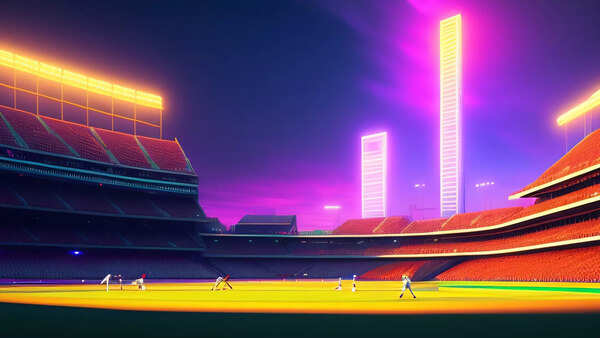It’s Not A Short And Sweet Tale Anymore | Guwahati News – Times of India
The DRS was called by the left hander as he was unhappy with the on-field umpire’s decision to not call the delivery wide despite it going down the leg side.
IPL 2023 SCHEDULE | IPL 2023 POINTS TABLE
After using the available technologies at hand, the third umpire found the ball edging the thigh guard and the umpire’s decision stayed. Whether this was one of the worst reviews in world cricket is debatable, but that it wasted some precious time in a game of T20 – a format that was developed to make matches shorter and keep the audiences glued to the game – is certain.
Then again in the 18th over, Caribbean batter Shimron Hetmyer called for a review to check the legitimacy of a waist-high full toss and that, too, stayed legal.
If delays due to DRS for dismissals, injuries, floodlight malfunctions, dew factor and dogs, snakes, birds or any other creatures/insects’ invasion were not enough, these hold ups to review wide/no balls have further plagued the very basis of IPL – maximum entertainment in shortest possible time.
Just into the eighth game of the season till Wednesday, all innings which went down at least close to 20 overs have taken well over the stipulated time for an innings – 90 minutes.
The very first innings of the season took 120 mins to complete when defending champions Gujarat Titans bowled to Chennai Super Kings. In reply, CSK took 103 mins to bowl 19.2 overs. Royal Challengers Bangalore took 122 minutes to bowl their quota against Mumbai Indians.
Regularly teams have taken three-figure minutes to complete innings with only two ending in two-digit figures – one among those is KKR’s rain-affected chase in Mohali.

And this can certainly become a point of bother for all stakeholders.
However, these unnecessary delays are not new to IPL. Over the years matches have taken close to four hours to complete, sometimes even beyond that – for instance Wednesday’s Royals versus Kings game took more than 4 hrs 15 mins in total – when officially it is supposed to end in approximately 3 hrs and 20 mins. So almost an hour’s delay.
Interestingly no match has been able to stick to that timeline in the recent past, barring low-scoring or rain-curtailed encounters. And spectators and broadcasters have failed to keep pace with it. These regularly longer or delayed matches affect the TV or online viewership of the cash-rich, high-adrenaline league after 11pm.

There are rules to penalize teams or captains for the delays – fine and one more fielder inside the 30-yard circle for the overs not bowled inside the specified time. But umpires hardly force it, taking kindhearted considerations of other factors for slowdowns in proceedings. So far this season only Chennai Super Kings have been penalized when bowling against Lucknow Super Giants while others have been overlooked.
When the BCCI and the IPL governing council are eager to spread the live action to newer and smaller venues in the country – like Guwahati this season – these close-to-midnight finishes can hurt the chances of full-house stadiums, among other reasons. In small cities, many spectators have to travel far after the match or search for hotels to spend the night in if they don’t find an affordable mode of transport. These make deeper holes in the pockets and can keep people from coming to stadiums.

Pundits and experts like Sunil Gavaskar and Ayaz Memon, among others, have repeatedly voiced their concerns about the slow over rates in the past few seasons. It’s high time the authorities take some measures to help the money-spinning league reclaim its initial crisp timings and keep the pace of the game from lagging behind.
For all the latest Sports News Click Here
For the latest news and updates, follow us on Google News.

